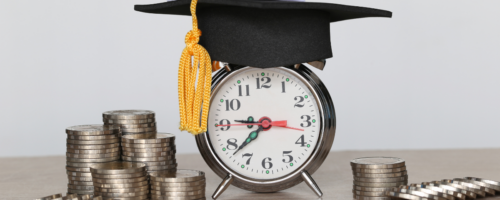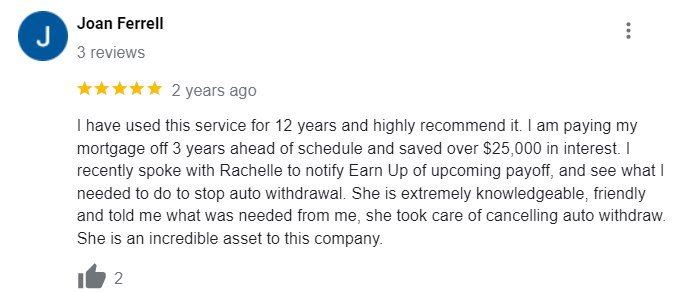Dealing with debt, especially credit card debt, is a common experience for a lot of us. You might be surprised to learn that over 82% of American adults have at least one credit card, and the amount of credit card debt keeps growing. Tackling a $5,000 debt might feel like a mountain, but we’re here to help you navigate how to pay off $5,000 in debt and come out stronger on the other side.
Getting Started: Face Your Debt and Make a Plan
The first step is understanding how much you owe. Gather all statements for your credit cards and make a list with each card’s balance and interest rate. Now, calculate your minimum monthly payments across all cards.
Having this information in one place makes it way less overwhelming and sets you up for success.
Build a Realistic Budget You Can Stick With
Budgets sometimes get a bad rap, but they’re crucial to regaining control of your finances, especially when figuring out how to pay off $5,000 in debt. You can either track your spending using a notebook or use one of those handy budgeting apps.
The important thing is to figure out exactly where your money goes each month. This will help you find areas where you might be able to cut back. Maybe you cut down on eating out a little this month or cancel that subscription you haven’t used in ages.
Every little bit helps.
Decide on a Debt Repayment Method
When it comes to paying off debt there are two methods many financial experts suggest. Each has a different psychological approach and one might appeal to you more than the other.
1. Debt Snowball: Tackle the Smallest Balance First
The Debt Snowball method focuses on quickly paying down your smallest debt first while maintaining minimum payments on others. Once you’ve paid off a debt you take that money and roll it into paying down the next smallest one.
Real-World Example:
Let’s say you have a $500 balance on a store credit card with a high-interest rate, and a larger $1000 credit card balance. You’d focus on paying down the $500 one first, as quickly as you can, then you’d focus on paying off the $1,000 debt.
This method allows for small wins early on to keep you motivated, even if the interest savings are not as significant.
2. Debt Avalanche: Prioritize High-Interest Debt
In contrast, the Debt Avalanche method focuses on paying down your highest-interest rate debt first, no matter the size, while making minimum payments on the rest. With this method, you’re less focused on fast wins and more on minimizing interest.
It often saves you more money overall.
Boost Your Efforts: Strategies for Faster Debt Payoff
Regardless of whether you choose the Debt Avalanche or Debt Snowball method, there are tactics you can use to help you become debt-free faster. Remember that how to pay off $5,000 in debt goes far beyond simply making your minimum monthly payment and hoping for the best.
Negotiate With Your Credit Card Issuers
If high interest is holding you back from paying down your credit card debt, consider reaching out to your creditors. Explain that you’re serious about repaying your debt and see if they’ll lower your interest rate.
They might surprise you and be willing to work with you, especially if you’ve been a reliable customer.
Explore a Balance Transfer Credit Card
This strategy can save you money, especially if your credit score is decent. Look for cards offering 0% APR for a set time (often 12-18 months). Transfer your existing balances, and you won’t incur interest during the promotional period, helping you knock out more principal.
You will need to qualify for a new card to be eligible for these benefits. Keep in mind that a balance transfer credit card might have a balance transfer fee, so compare carefully.
Consider a Debt Consolidation Loan
A debt consolidation loan combines several debts into one, often with a fixed interest rate and payment. This option might simplify your repayment process, but like balance transfer cards, consolidation loans are not for everyone.
For instance, you usually need decent credit for approval. Be mindful of origination fees that can increase overall costs. It is helpful that you can pre-qualify to see what rates you’ll be offered.
Supplement Your Income
Bringing in extra income with a side hustle, even just temporarily, can be game-changing. Consider driving for a ride-sharing service, freelance writing, or dog walking for a few extra hundred dollars a month to throw at your debt.
It can help you pay off debt a lot faster.
Seek Professional Help
Dealing with overwhelming debt on your own can feel scary and even shameful. The National Foundation for Credit Counseling offers help and support so you’re not facing this alone.
Certified credit counselors can assess your situation, give personalized advice and help create a manageable debt repayment or debt relief plan.
FAQs about How to Pay Off $5,000 in Debt
How Long Does it Take to Pay Off $5,000 in Debt?
There’s no set time because it depends on how aggressive your payments are and how high your interest rates are. For some, using balance transfer cards might work, while for others, taking out a personal loan for debt consolidation makes more sense. Using these debt repayment strategies might speed up the payoff process.
If you make more than the minimum payments on a debt it might be paid off a lot faster. However, be realistic about what is actually achievable. Remember that if you just pay the minimum balance on a credit card each month, it could take years to pay off your balances completely.
Using strategies to speed things up, such as those mentioned above, will mean that $5,000 will be paid down sooner rather than later.
Is $5,000 in Debt a Lot?
Yes and no. A study conducted by credit reporting agency Experian found the average American carries $6,300 in credit card debt alone. That is a very large average.
For many, $5,000 might not feel huge, while for others that amount can seem insurmountable, it truly depends on factors like your overall financial picture, income level, spending habits, and interest rates.
For instance, if you’re in an entry-level position straight out of college, have substantial student loan debt and high monthly rent, $5,000 of debt might make a serious dent in your disposable income. On the flip side, if you make good money at a 9-to-5, diligently track your monthly spending and your housing expenses are under control, it is entirely possible you can put extra money aside each month toward knocking it out.
How Can I Get Out of $5k Debt Fast?
There are a few ways to get out of $5,000 in debt fast. These tactics might not work for everyone, but could make a serious difference when trying to get out of debt:
- Pick up a side hustle or look for opportunities to bring in extra income and dedicate it all to paying off debt.
- Make more than the minimum payments, even by small amounts.
- See if you’re eligible for a new credit card with better terms.
- Negotiate with your credit card issuer to lower interest rates.
It might be that by incorporating these tips, in addition to one of the other strategies we discussed for paying down debt, that you’ll be debt free sooner rather than later.
Conclusion
Getting a grip on $5,000 of debt can seem scary, but knowing how to pay off $5,000 in debt means taking the first steps. You can regain control of your finances and reach your money goals.
Implement these tips and seek help when you need it.










